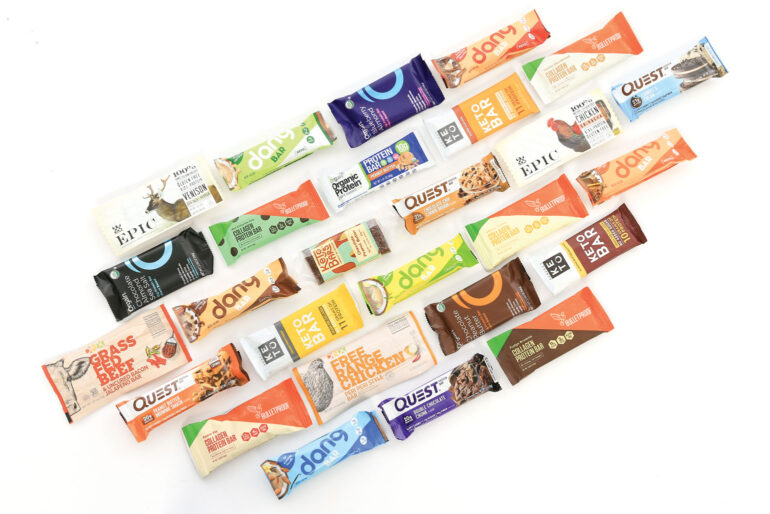Americans are eating more meals on the go, and snacks such as energy bars are keeping up, morphing from guilty pleasure to meal replacement. The wellness trend plays a part, pushing bar brands to bulk up their products with protein, vitamins, and other nutrients consumers favor. We looked at one segment of the energy bar industry, paleo and keto bars, to learn why these single-serve bars now occupy an entire aisle at most grocery and convenience stores.
But first, let’s get a few terms out of the way.
What Are Keto and Paleo Bars?
Keto
Short for “ketogenic,” keto or the keto diet is a way of eating designed to push the body to rely on fat for energy. To do that, eaters must deprive their body of glucose and eat either very low or no carbohydrates. Human bodies today are typically fueled by carbohydrates like rice, bread, and cereal that are quickly digested, absorbed into the bloodstream and turned into energy. Deprive the body of carbs, and it will look elsewhere for energy. When fat is a source of energy, the liver breaks down the fat into “ketones.” This process, known as “ketosis,” means eating foods that force the body to use fats and not carbs as their primary energy source.
The ketogenic diet typically requires adherents to eat less than 10 percent of calories from carbohydrates, including all grains, legumes, and fruits; 15 percent of calories from protein such as fish and beef, and 75-80 percent of calories from fats such as olive and coconut oil, cheese, avocado and nuts.
Paleo
Named for the Paleolithic Era, which dates from 2.5 million to 10,000 years ago, “paleo” is a way of eating that permits foods our earliest ancestors would recognize, such as buffalo, fruits, fish, and nuts and seeds. Another way to consider this is from an evolutionary standpoint, that our bodies are not adapted to eat the foods produced by modern agriculture. The food and food by-products that emerged once humans began row cropping, such as legumes, grains, and dairy, are not on the paleo plan.
There is wide latitude in how the bar industry interprets both keto and paleo. Bars that are based on fruit such as dates are not keto but can be paleo. Bars that include whey, a derivative of the dairy industry, are not considered keto but are paleo. But neither program allows added sugars, which led the bar industry to come up with sugar alternatives. None of the sugar alternatives appealed to our tasting panel.
What Is a Keto Sugar?
When following a keto diet, all sugars (from fruit, grains, or sweeteners) are to be avoided as they are instantly converted to glucose. Alternative sugars have emerged that deliver the sweetness our palates crave without all the carbohydrates in cane sugar, honey, maple syrup, or other sugars. To deliver sweetness without carbs, keto bars use the below sugar substitutes. Paleo bars use either no sugar or are naturally sweetened with fruit such as dates or bananas.
- Stevia is a natural sugar (it comes from a plant) that contains little to no calories or carbs.
- Monk fruit is a natural sugar derived from a plant that is up to 250 times sweeter than cane sugar. It contains no calories or carbohydrates.
- Sucralose is an artificial sweetener that is not metabolized, meaning it simply passes through our digestive systems.
- Erythritol is a type of sugar alcohol that is nearly as sweet as natural sugar. It stimulates the palate to mimic the taste of sugar but delivers a fraction of the calories of regular sugar.
What About XCT or MCT Oil?
- MCT Oil, or “medium-chain triglyceride oil,” is an ingredient derived from coconut or palm oil that is said to boost energy by increasing ketone production and, unlike other fatty acids, is not stored as fat.
- XCT Oil is made with only C8 and C10 MCTs, which are said to metabolize more efficiently into ketone energy than other MCT oils.
Behind the Bars
Admit it: you are harboring a single-serving, protein-packed rectangular shaped food imposter in your desk drawer, backpack, or purse. Don’t worry, we are, too. We did a taste test of bars found at local grocery stores to help you, dear reader, figure out the 411 on the new breed of keto and paleo bars gobbling up shelf space at your local market. We tasted nine bars (four vegetarian) that ranged from savory to sweet. Though each bar comes packaged in a non-recyclable, plastic wrapper that does not support zero waste initiatives, their convenience and satiety may convince eaters on the run to give one a try. Here’s what our tasting panel thought.
DNX Grassfed Beef Bar
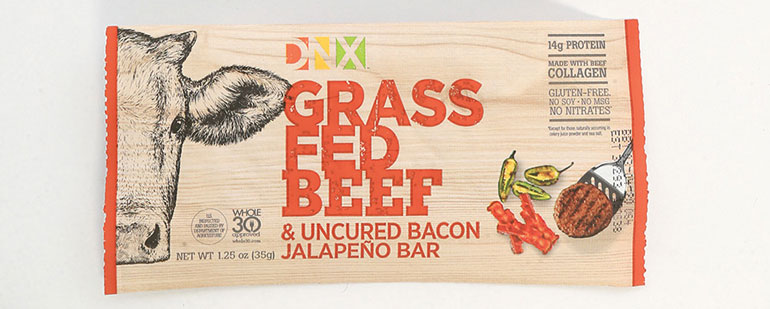
Flavor
Uncured Bacon and Jalapeño
Pros
- Soft texture
- Nice, spicy flavor
- 14 g protein
Cons
- 360 mg sodium
Comments
This was the panel’s favorite meaty bar. The ingredient dek does include dates, which added a subtle sweetness, and the subtle pop of bacon and jalapeño was a hit with morning coffee. The package was also easy to open.
Epic Venison Bar
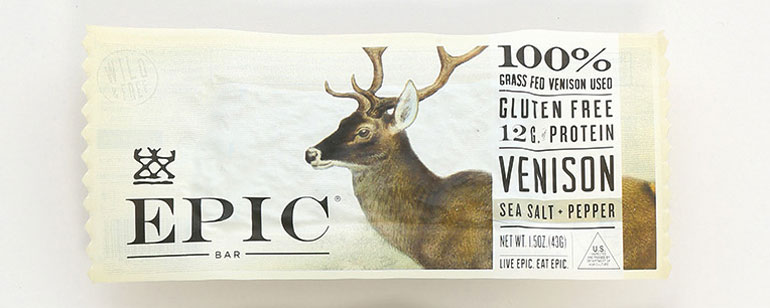
Flavor
Venison
Pros
- Clean, whole ingredients
- Clean flavor, easy to chew
- 12 g protein
Cons
- 390 mg sodium
Comments
This bar was a hit for its minimal ingredient dek and clean flavor.
Bulletproof Collagen Protein Bar
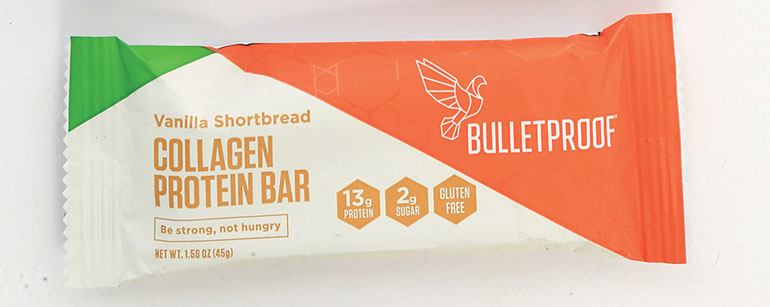
Flavor
Vanilla Shortbread
Pros
- Triglyceride-balancing XCT oil
- Vegetarian
- 13 g protein
Cons
- Lingering aftertaste of stevia
- Crumbly texture
Comments
The panel was surprised at the crumbly texture of the bar, but did like the inclusion of MCT oil.
Perfect Keto Bars
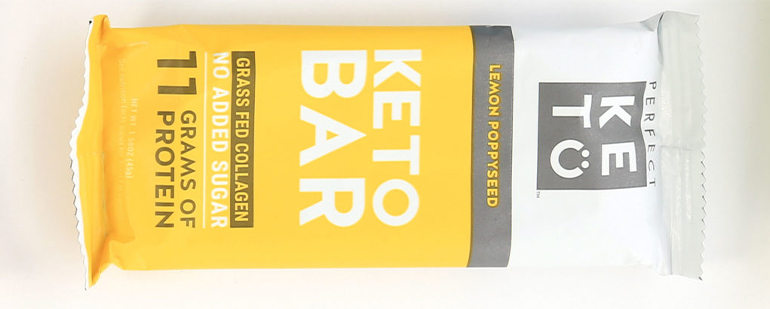
Flavor
Lemon Poppyseed
Pros
- Triglyceride-balancing MCT oil
- Smooth texture
- 11 g protein
Cons
- Lingering aftertaste of stevia and lemon oil
Comments
The impact of stevia and lemon oil left most of our panel non-plussed. We would have liked a subtler lemon flavor without the stevia.
Dang Bar
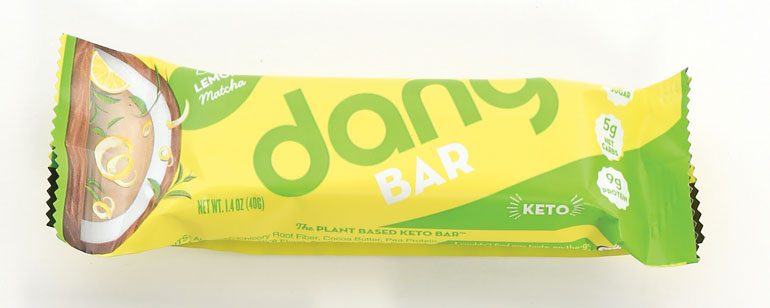
Flavor
Toasted Coconut
Pros
- Coconut flavor
Cons
- N/A
Comments
The panel was pleased to find that, although this bar does contain stevia, it is not prominent on the palate. The true flavor of coconut comes through. This was our favorite vegetarian bar.
Orgain Bar
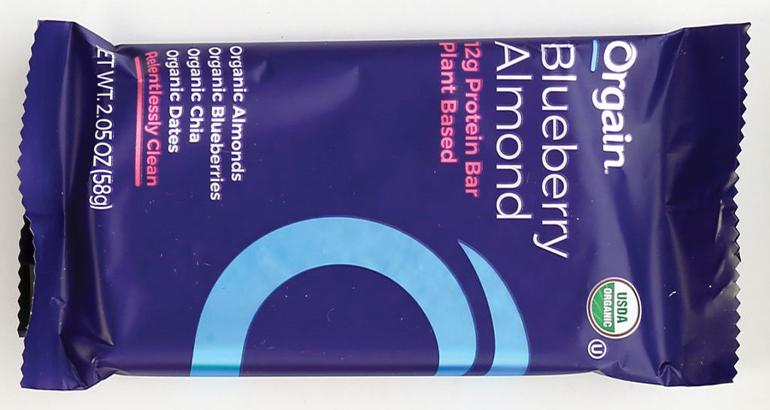
Flavor
Blueberry Almond
Pros
- Clean, whole ingredients
- Fresh blueberry flavor
- 12 g protein
Cons
- 14 g sugar
Comments
The panel relished the fresh blueberry flavor and no added sweetener in this bar. If the sugar number came in below 8 grams, we would have liked it even more.
Keto Bar
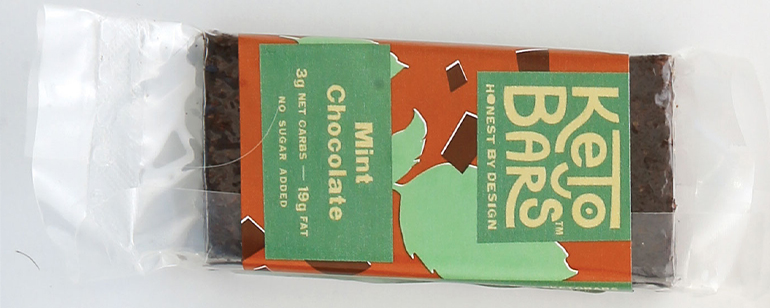
Flavor
Mint Chocolate Chip
Pros
- Soft texture
- Minty flavor
- 6 g protein
Cons
- Lingering aftertaste of stevia
- Contains the sugar alcohol erythritol
Comments
The further we moved into bars designed with sweeter flavors, the less our panel enjoyed them. The combination of stevia and erythritol meant this bar was too cloying for the Marin Magazine panelists.
Orgain Protein Bar
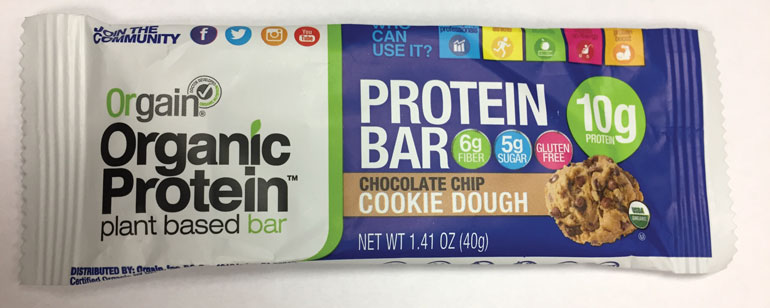
Flavor
Chocolate Chip Cookie Dough
Pros
- Soft texture
- Chocolate bits mixed in
- 10 g protein
Cons
- Lingering aftertaste of erythritol
Comments
The added chocolate bits gave this bar a fun texture, but the lingering aftertaste meant the group did not favor it.
Quest Protein Bar
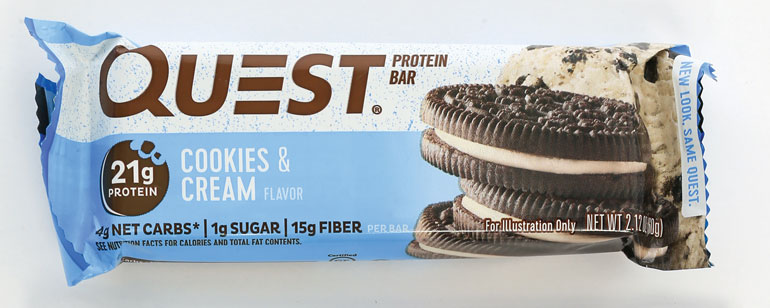
Flavor
Cookies & Cream
Pros
- Soft but firm texture
- 21 g protein
Cons
- Lingering aftertaste of sucralose
- Lingering aftertaste of stevia
Comments
The combination of sucralose and stevia was overpowering for the panel. This was our least favorite bar.
This article originally appeared in Marin Magazine as “9 Keto Bars Compared.”
